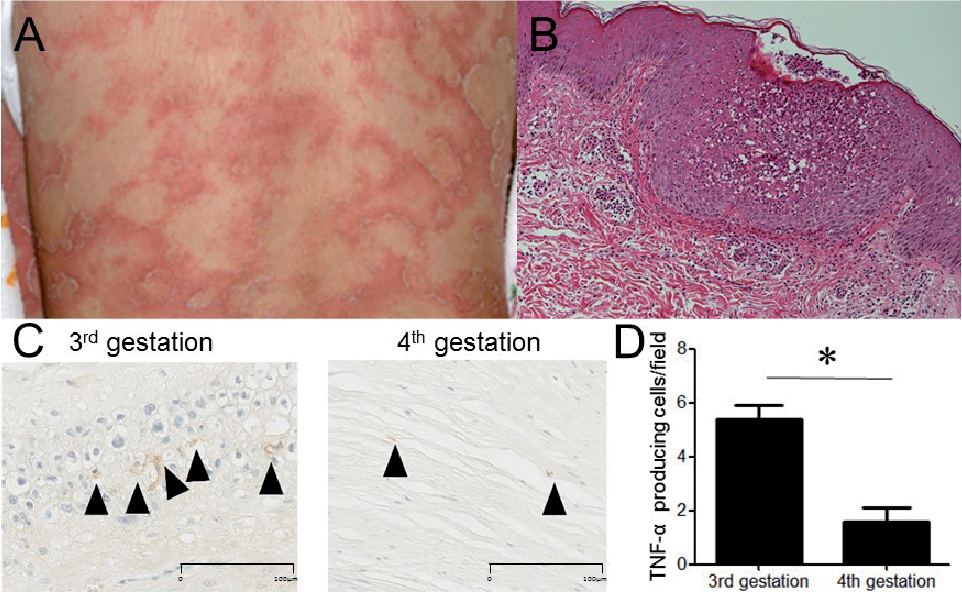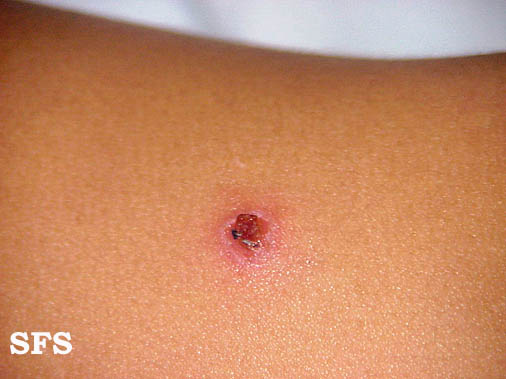Impetigo, often abbreviated as IMP, is a highly contagious skin infection that primarily affects children but can also occur in adults. This condition is characterized by red sores or blisters that can rupture, ooze fluid, and form a honey-colored crust. Impetigo is commonly seen in warm, humid environments and spreads easily through close contact or shared items like towels and clothing. Understanding the causes, recognizing the symptoms, identifying the types, and knowing the available treatments are essential for managing this condition effectively.

What Causes Impetigo?
Impetigo is caused by bacteria, with the two most common culprits being Staphylococcus aureus and Streptococcus pyogenes. These bacteria thrive on the skin’s surface and can enter the body through cuts, insect bites, or other breaks in the skin. The following factors contribute to the development of impetigo:
- Poor Hygiene: Lack of proper hygiene practices can create an environment where bacteria can flourish.
- Skin Injuries: Any break in the skin, such as scrapes, cuts, or eczema, provides an entry point for bacteria.
- Crowded Living Conditions: Close contact in schools, daycare centers, or households increases the likelihood of transmission.
- Warm and Humid Weather: These conditions promote bacterial growth and make the skin more susceptible to infection.
- Weakened Immune System: Individuals with compromised immune systems are at a higher risk of developing impetigo.
Recognizing the Symptoms of Impetigo
The symptoms of impetigo vary depending on the type and severity of the infection. However, there are some common signs that can help identify the condition early:
- Red Sores: Small red spots or blisters appear on the face, hands, or legs. These sores are often itchy and may burst open.
- Honey-Colored Crusts: After the sores rupture, they ooze fluid and develop a distinctive golden-yellow crust.
- Swollen Lymph Nodes: In some cases, nearby lymph nodes may become swollen and tender.
- Mild Fever: A low-grade fever may accompany the infection, especially in severe cases.
- Itching and Pain: The affected areas may cause discomfort, itching, or mild pain.
If left untreated, impetigo can lead to complications such as cellulitis, a deeper skin infection, or kidney problems in rare cases. Early recognition of symptoms is crucial for preventing the spread of the infection and minimizing complications.
Types of Impetigo
Impetigo is classified into three main types based on its appearance and the underlying bacteria causing the infection. Each type has distinct characteristics that help healthcare providers determine the appropriate treatment.
Bullous Impetigo
Bullous impetigo is characterized by the formation of large, fluid-filled blisters. These blisters are typically painless and do not burst easily. They often appear on the trunk, arms, or legs. This type of impetigo is primarily caused by Staphylococcus aureus, which produces toxins that damage the skin layers and result in blister formation.
Non-Bullous Impetigo
Non-bullous impetigo is the most common form of the infection. It begins with small red sores that quickly rupture and ooze fluid. The fluid dries up to form a honey-colored crust. Non-bullous impetigo is usually caused by both Staphylococcus aureus and Streptococcus pyogenes. It commonly affects the face, particularly around the nose and mouth.
Ecthyma
Ecthyma is a more severe form of impetigo that penetrates deeper into the skin layers. It results in painful, pus-filled sores that develop thick crusts. Ecthyma often leaves scars after healing and requires prompt medical attention. This type is typically associated with poor hygiene and chronic skin conditions like eczema.
Treatment Options for Impetigo
Treating impetigo involves addressing the bacterial infection, relieving symptoms, and preventing the spread of the condition. The treatment approach depends on the severity of the infection and the patient’s overall health. Below are the primary treatment options:
Antibiotic Creams and Ointments
For mild cases of impetigo, topical antibiotics are often sufficient. These creams or ointments are applied directly to the affected areas after cleaning them gently with soap and water. Commonly prescribed topical antibiotics include mupirocin and retapamulin. Applying these medications helps eliminate the bacteria and speeds up the healing process.
Oral Antibiotics
In more severe or widespread cases, oral antibiotics may be necessary. These medications are taken by mouth and work systemically to combat the bacterial infection. Examples of oral antibiotics used for impetigo include amoxicillin-clavulanate, cephalexin, and clindamycin. It is essential to complete the full course of antibiotics as prescribed, even if symptoms improve, to prevent recurrence or antibiotic resistance.
Home Care and Hygiene Practices
In addition to medical treatments, home care plays a vital role in managing impetigo. The following practices can help alleviate symptoms and prevent the spread of the infection:
- Keep the Skin Clean: Gently wash the affected areas with mild soap and water several times a day.
- Avoid Scratching: Trim the patient’s nails and discourage scratching to prevent further skin damage and spreading.
- Use Warm Compresses: Apply warm, moist compresses to soothe the skin and remove crusting.
- Wash Hands Frequently: Encourage regular handwashing to reduce the risk of transmission.
- Separate Personal Items: Avoid sharing towels, clothing, or bedding with others to minimize the spread of bacteria.
Preventing Recurrence
Preventing impetigo from recurring involves maintaining good hygiene and addressing any underlying conditions that may predispose individuals to infections. For example, treating chronic skin conditions like eczema or dermatitis can reduce the risk of developing impetigo. Additionally, ensuring that all family members practice proper hygiene and avoid close contact with infected individuals can help prevent outbreaks.
When to Seek Medical Attention
While many cases of impetigo can be managed at home with over-the-counter remedies and prescription medications, certain situations warrant immediate medical attention. These include:
- Severe Symptoms: If the infection spreads rapidly or causes significant pain, swelling, or fever.
- Signs of Cellulitis: Redness, warmth, and swelling that extend beyond the initial sores may indicate a deeper skin infection.
- No Improvement: If symptoms persist or worsen despite treatment, consult a healthcare provider for further evaluation.
- Underlying Health Conditions: Individuals with weakened immune systems or chronic illnesses should seek medical advice promptly.
Complications Associated with Impetigo
Although impetigo is generally a mild and treatable condition, complications can arise if the infection is left untreated or improperly managed. Some potential complications include:
- Cellulitis: A deeper skin infection that can cause redness, swelling, and pain in the affected area.
- Scarring: Severe forms of impetigo, such as ecthyma, may leave permanent scars after healing.
- Kidney Problems: In rare cases, untreated streptococcal infections can lead to post-streptococcal glomerulonephritis, a condition affecting the kidneys.
- Spread of Infection: Impetigo can spread to other parts of the body or to other individuals through direct contact.
Understanding these potential complications underscores the importance of timely diagnosis and treatment to ensure a full recovery and minimize risks.





